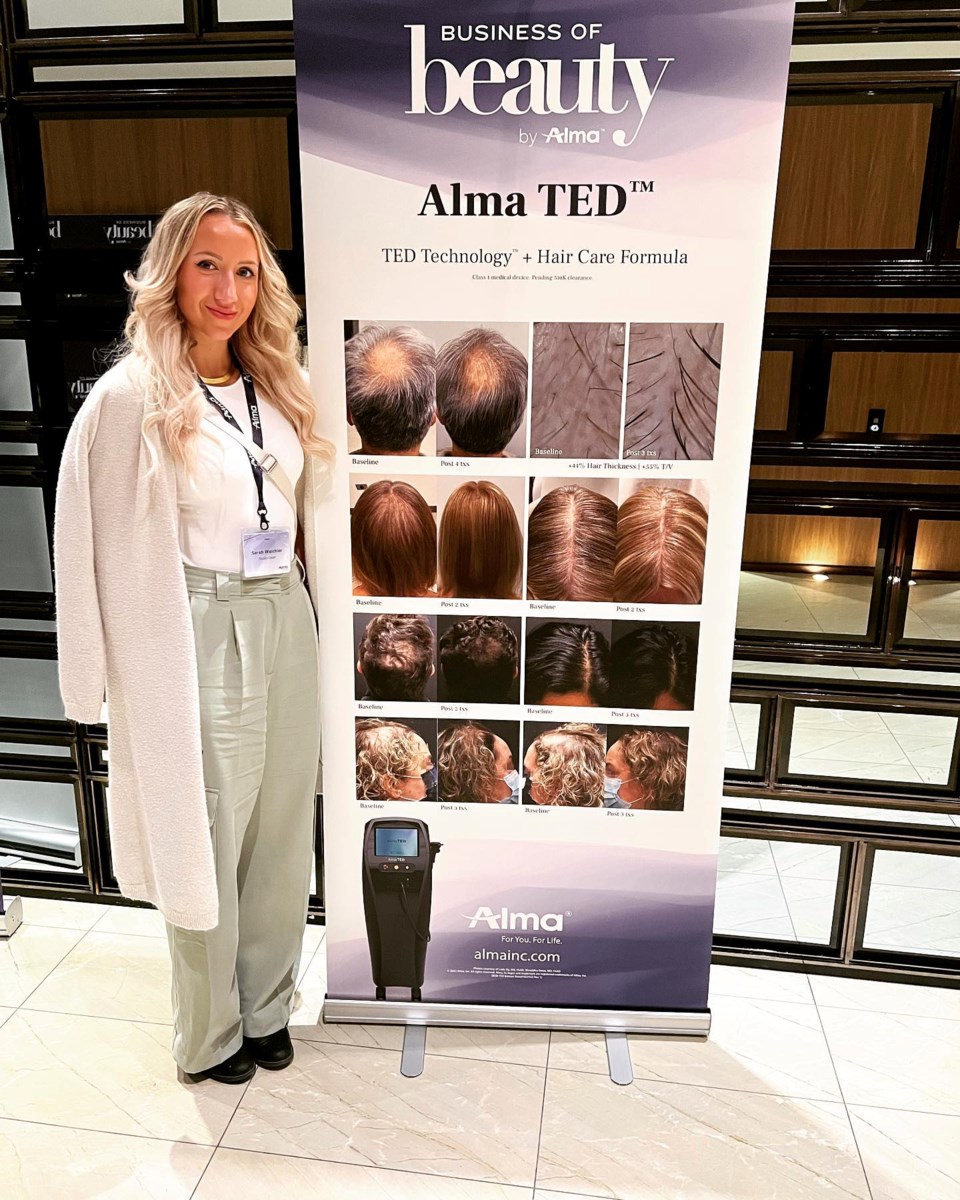Hair, and the state of it, is an ongoing obsession for many of us.
Anyone who has ever worried like they have too much body hair has likely felt the discomfort and self-consciousness of having to bare their torso, arms or legs around others.
Others struggle with thinning hair and have tried every remedy without success.
Sarah Weichler’s Studio Laser is brand new to Sudbury and the surrounding areas. She treats clients with both of these issues and says advancements in technology have come a long way.
Hair removal 101
Anyone hoping to remove hair from part of their body for good will be interested in laser technology. The process usually requires between 6-12 treatments spaced 4-6 weeks apart. “It all depends on each individual’s hormone levels, hair type and reaction,” she explains. Each session lasts anywhere from 10-60 minutes, depending on how many areas the client wants done. Yearly maintenance may or may not be required.
It can be done any time of year, with just one caveat: you need to be diligent about following the post-treatment care guidelines. “Sunscreen is important all year round and should be a general rule of thumb no matter if you’re undergoing treatments or not,” says Weichler.
She uses the Soprano Ice Platinum, a device that is safe for all skin types and tones. While it used to be that people with darker skin tones (even fairer ones with tanned skin) weren’t candidates for the process, that is no longer the case.
This machine has three different wavelengths all in one hand piece: 755 Alexandrite, 810 Diode and 1064 Nd-Yag. Each wavelength targets a different layer of the dermis. The higher the wavelength, the deeper the penetration goes; with darker skin, a wavelength of 1064 is needed but a lower fluence level is applied, which avoids the risk of burning. “With these three wavelengths the entire range of Fitzpatrick skin types can be covered, which makes the device effective,” she says. It can also target lighter hair colours and all hair densities.
The tech has improved in other ways too.
“One big improvement is the comfort level of these devices. Older ones used the stamping method, where a jolt of light and heat would be delivered to the skin in a flash. This resulted in an elastic, rubber-band-like snap to the skin that was uncomfortable. The stamping method also wasn’t guaranteed to target the whole follicle and could accidentally skip over an area. It could take hours to complete as the laser would have to be moved slowly over each body part,” says Weichler.
“With my new technology, the laser head goes to -3° Celsius, which keeps the skin cool during the procedure and lowers the chance of side effects. The device uses an ‘in motion’ approach to the skin, so the laser head makes consistent contact with the skin and the head glides over it in a continuous motion. This slowly heats up the dermis, where the follicle lives, and destroys it, through the absorption of melanin. There is no instant snap to the skin. The treatments can be done very fast, with underarms taking 5 minutes and full legs taking 15.”
Using lasers to grow hair
We’re used to hearing about lasers removing hair, but growing it? Surely this is a new technology.
“TED by Alma, which is my hair restoration machine, is a new revolutionary hair restoration device,” Weichler explains. “The technology was new to Canada in late 2021, with the first couple of TED devices not premiering until 2022. I currently have the only TED machine in northern Ontario; Barrie is the next closest location to me.”
What is it? TED stands for trans-epidermal drug delivery. This device uses acoustic sound waves and air pressure in the form of an ultrasound handpiece to massage the scalp. It increases blood flow to the scalp and creates little micro bubbles into your stratum corneum, the outermost layer of the skin. A hair care formula serum that is FDA-approved is then massaged with the handpiece into the scalp. There is no downtime, no shedding, and no needles or blood.
The hair restoration procedure generally requires 3-4 treatments spaced 4-6 weeks apart, with each session lasting approximately 30 minutes. It’s at the 4-week point that you can usually start to see results and yearly maintenance is generally required. Clients may also use other hair care methods, such as Rogaine®, for continuous results.
“A really easy description of this process is like gardening. You stir up the soil, plant the ‘seed’, water it, watch it grow and maintain it,” she says.
The best candidates for this procedure are clients who are thinning, balding or worried about postpartum hair loss. Cancer patients are able to do these treatments as long as they have finished their treatments for a period of 5 months or more. Certain clients may not respond well, Weichler warns, including anyone who suffers from Alopecia Areata (which is an autoimmune disease) or who is “shiny bald”; this means there is scarring over the hair follicle, so the actual follicle itself is gone. While treatments have occasionally worked on this clientele, they were rare cases.
Weichler is happy to be able to offer clients these treatments from some of the best high-end machines in the beauty space at an affordable cost. She has the only Soprano Ice Platinum from Alma machine in Sudbury for laser hair removal, as well as the only TED by Alma hair restoration machine.
For more on how laser technology can improve your skin and hair, visit Studio Laser or call 705-205-4176. You can also follow the studio on Facebook and Instagram.

